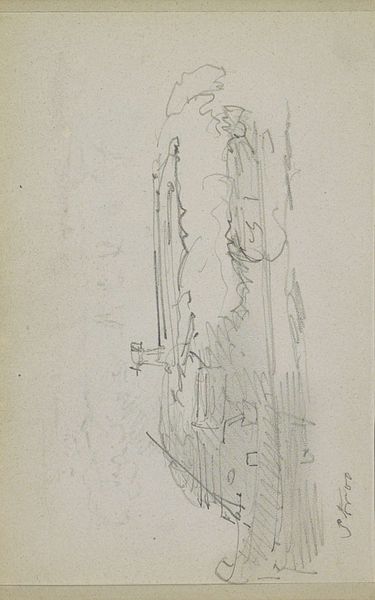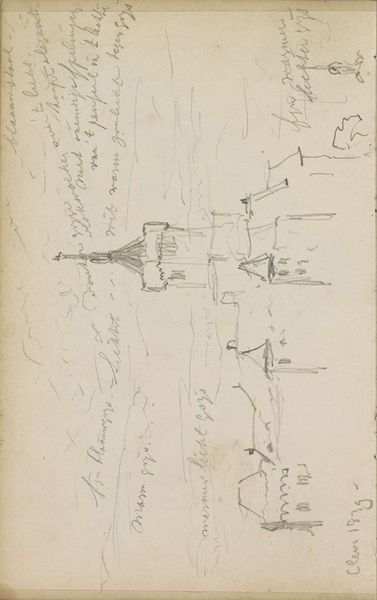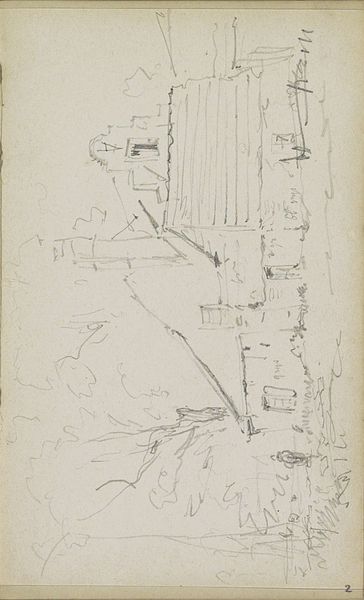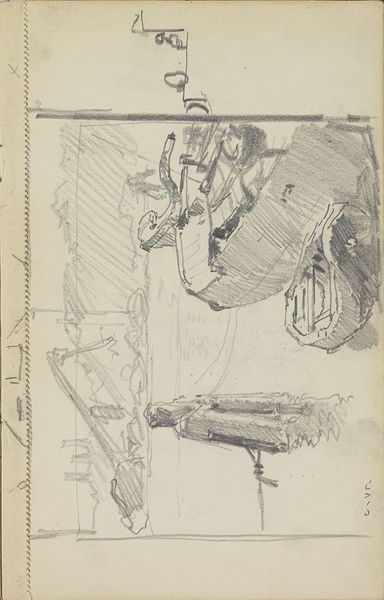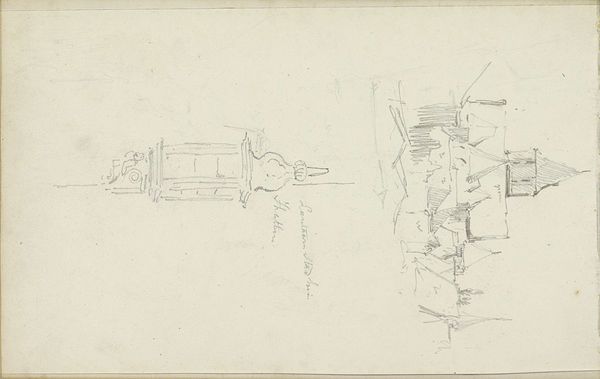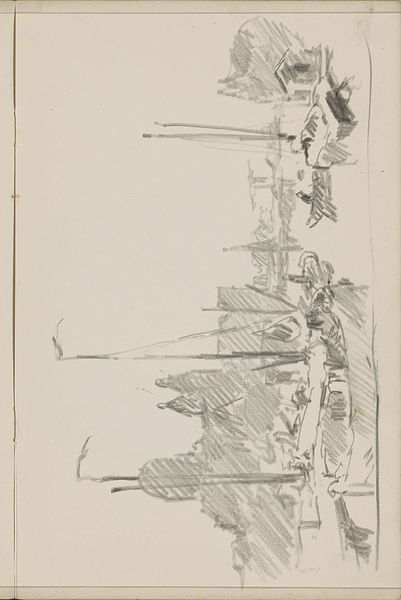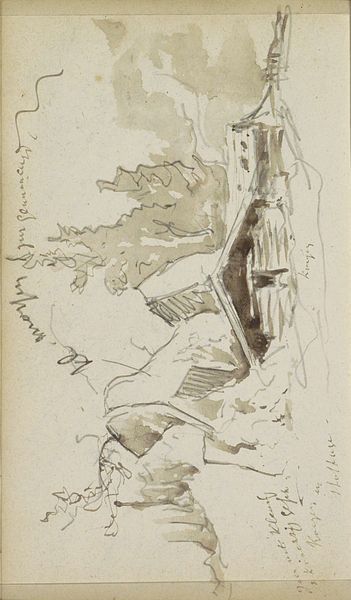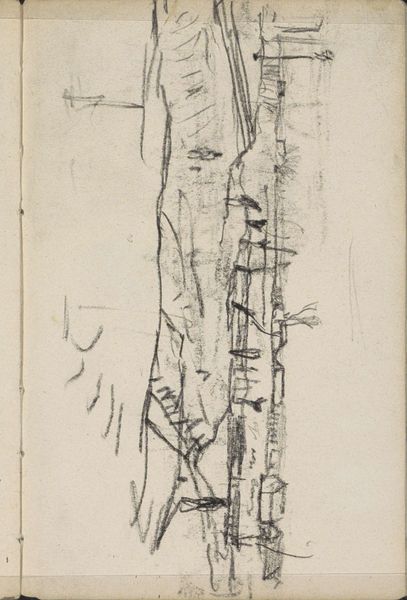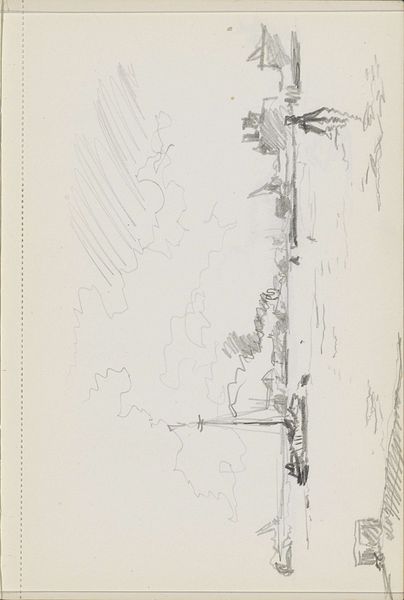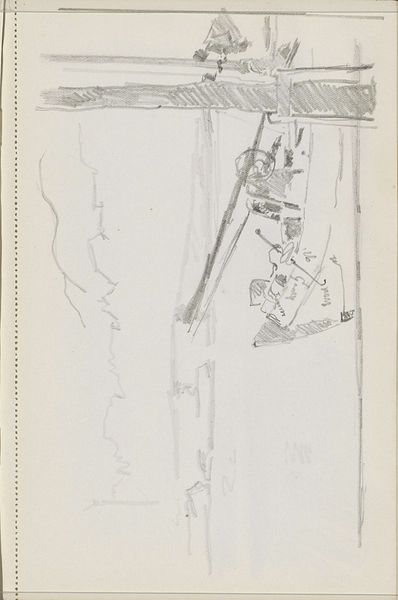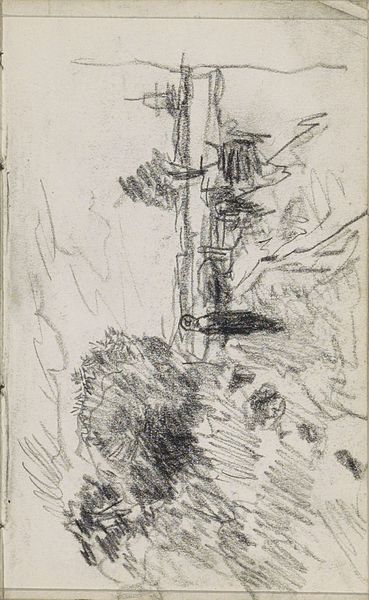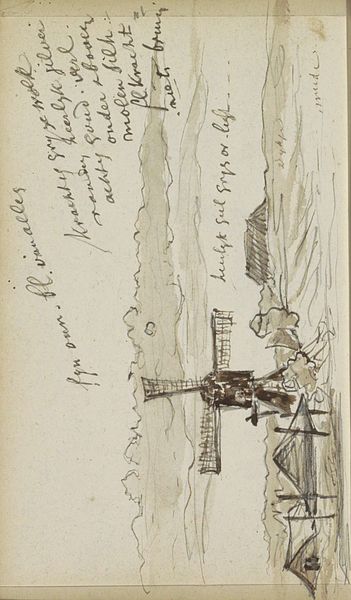
drawing, pencil
#
drawing
#
toned paper
#
light pencil work
#
pen sketch
#
sketch book
#
incomplete sketchy
#
landscape
#
river
#
personal sketchbook
#
ink drawing experimentation
#
pen-ink sketch
#
pencil
#
sketchbook drawing
#
sketchbook art
#
realism
Copyright: Rijks Museum: Open Domain
Curator: Before us is a drawing by Johannes Tavenraat, titled "Landschap met een molen bij de rivier de Rotte," created sometime between 1862 and 1865. It depicts a landscape with a windmill situated along the Rotte river. Editor: It feels very immediate, like a fleeting moment captured in graphite and ink. The rapid strokes lend it an airy quality, almost as if the wind itself is animating the scene. Curator: Indeed. Note the tonal quality of the paper itself, which contributes to the sketch's atmosphere. Tavenraat employed both pencil and pen in this work; one can trace his experimentation with line weight and texture. The sketchy, incomplete feel suggests this came directly from his sketchbook. Editor: It’s interesting to think about what role these windmills had during Tavenraat's time. These aren't just picturesque features, right? They were key components of the industrial and agricultural infrastructure, intimately tied to the livelihoods of the working class. How might their representation reinforce, or perhaps critique, ideas about labor? Curator: Precisely. The social function of the river itself merits our consideration as a channel for transportation, irrigation, even sanitation. Understanding those networks – their economic and societal significance – allows for a more nuanced appreciation of what's at play here, technically, materially. Editor: I am really compelled by how Tavenraat captures the sense of place while eliding detail. It seems so casually done, but consider what a calculated decision it must have been, to evoke without fully representing, mirroring the experience of many working people who might have found comfort near this river while living with financial insecurities. Curator: Well, this landscape is as much about the labor embedded within it as it is about aesthetic representation. He calls our attention to the often unseen processes and the materials that sustain a particular way of life. Editor: Absolutely. By grounding the image in the social conditions of the time, it allows for a broader, more critical view, particularly when engaging with questions of land, ownership, labor, and progress. Thank you for pointing that out. Curator: Thank you. The labor of creating is another consideration. It always bears emphasis in viewing artworks such as this piece.
Comments
No comments
Be the first to comment and join the conversation on the ultimate creative platform.
